The American Association of Geographers congratulates the individuals and entities named to receive an AAG Award. The awardees represent outstanding contributions to and accomplishments in the geographic field. Formal recognition of the awardees will occur at the 2019 AAG Annual Meeting in Washington, DC during the AAG Awards Luncheon on Sunday, April 7, 2019.
2019 Susan Hardwick Excellence in Mentoring Award
The AAG bestows an annual award recognizing an individual geographer, group, or department, who demonstrates extraordinary leadership in building supportive academic and professional environments and in guiding the academic or professional growth of their students and junior colleagues. The late Susan Hardwick was the inaugural Excellence in Mentoring awardee. The Award was renamed in her honor and memory, soon after her passing.
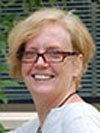 Lorraine Dowler, Penn State
Lorraine Dowler, Penn State
Dr. Lorraine Dowler not only mentors at all levels (early career faculty, her own students, and students that were/are not her own-outside her university), but is a strong advocate for her advisees, the greater student body (undergraduate and graduate), and the AAG community. As mentioned in one of her letters of support, she is committed to the holistic development of her advisees, while another notes that she pays particular attention to the mental, physical, and emotional well-being of those with whom she interacts, especially new faculty learning to balance the demands of academia. Outside of her tireless advocacy for students and colleagues, she continues to advise, research, publish, and contribute to the field of geography. She continues to go over and beyond what is expected.
Dr. Dowler’s advocacy of students and colleagues beyond “just getting through the Ph.D. and tenure track” (e.g. working with the letter writer experiencing the travel ban, threatening students in the classroom, etc.) went above and beyond the criteria listed by the AAG. As noted by the committee, “…mentorship, and viewing students and colleagues as whole people, not just academics, is integral to our discipline as not just successfully producing the next cohorts of academics but actively supporting and sustaining us by transforming the discipline in the way they model and mentor.” As a committee, we agree that the qualities and characteristics that Dr. Dowler puts forth, and her genuine concern for all those that work with her (colleagues, students, etc.) make her an excellent choice for this award.
2019 Enhancing Diversity Award
The AAG Enhancing Diversity Award honors those geographers who have pioneered efforts toward, or activelyparticipate in efforts towards encouraging a more diverse discipline.
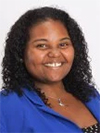 Latoya Eaves, Middle Tennessee State University
Latoya Eaves, Middle Tennessee State University
Dr. Latoya Eaves has worked with unflagging determination to bring emancipatory geography to the forefront of the discipline through institutional advocacy, mentorship, community engagement, and, of course, intellectual production. Her cutting-edge scholarship engages and informs racial, gendered, and sexual dimensions of identity and politics.
Dr. Eaves works actively on many fronts to create a more inclusive academy. Her commitment to establish the Black Geographies Specialty Group and her generous support of other specialty groups serving under-represented groups of geographers are widely applauded. One of her colleagues noted: “The time and energy [she] has dedicated to the discipline and the AAG is a key reason why many graduate students and faculty are engaging in Black Geographies thought and why a number of Geography departments are advertising for scholars whose research is grounded in Black Geographies.”
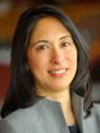 Minelle Mahtani, University of British Columbia
Minelle Mahtani, University of British Columbia
For over two decades Dr. Minelle Mahtani’s theoretical and applied work has made great inroads into the problem of racism in our discipline as well as in racist policy practices in Canada. In her current position as Senior Advisor to the Provost on Racialized Faculty at the University of British Columbia, she will be instrumental in advancing the University’s institutional commitment to advancing equity and inclusion in the scholarly and leadership environment for faculty at UBC.
Mahtani’s work on mixed race identities; the intersectionality of race, ethnicity, and gender; and the production of identity and knowledge have laid the foundations for other geographers’ work and teaching. Additionally, Dr. Mahtani is applauded for her generous mentoring of students of color.
As a journalist, Dr. Mahtani has used her skills to engage the public in issues of identity, diversity and the lack of diversity and place. This is exemplified notably, though not exclusively, through her radio program “Sense of Place.”
2019 The AAG Stanley Brunn Award for Creativity in Geography
The AAG Stanley Brunn Award for Creativity in Geography is given annually to an individual geographer or team of geographers that has demonstrated originality, creativity and significant intellectual breakthroughs in geography. The award includes a prize of $1,000.
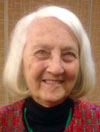
Janice Monk, Research Professor, School of Geography and Development, and Research Social Scientist Emerita at Southwest Institute for Research on Women, at the University of Arizona
Janice Monk, Research Professor, School of Geography and Development, and Research Social Scientist Emerita at Southwest Institute for Research on Women, at the University of Arizona Professor Monk is one of the most influential figures in the disciplines of geography and women’s studies. Her interdisciplinary research in geography education and feminist/gender studies has played a pivotal role in within the discipline. Her two decades as Director of the Southwest Institute for Women’s Studies, focusing on women’s employment, education, health, as well as encouraging science and math education for girls, have introduced feminism to multiple generations of geographers. In addition, the AAG recognizes Dr. Monk’s work on university-level teaching and graduate level geography education; her early and significant involvement in the Geography Faculty Development Alliance (GFDA); and her work on AAG projects (EDGE and others) researching career opportunities and professional development for geographers. The AAG also applauds Dr. Monk for her large body of publications, and your co-editorships of two series: International Studies of Women and Place and of Society, Environment and Place.
Professor Monk forcefully demonstrates the highly creative and consequential place that geographers can have in engaging in and shaping broader transdisciplinary discussions and debates. For these reasons, the AAG is proud to confer the 2019 AAG Stan Brunn Award for Creativity in Geography on Janice Monk.
2019 AAG Presidential Achievement Award
The AAG Presidential Award is given with the purpose of recognizing individuals for their long-term, major contributions to geography. The Past President has the honor of bestowing this distinction on behalf of the discipline and the association.
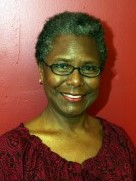 Rickie Sanders, Temple University
Rickie Sanders, Temple University
The AAG recognizes Dr. Sanders’ path-breaking role in enhancing diversity and inclusion in geography and championing the study of race, gender, and social justice within the discipline and beyond. Her long-standing contributions include award-winning teaching and mentorship and leading important initiatives to broaden the participation and belonging of historically under-represented groups. She powerfully uses her scholarship and her own biography to address the need for women of color in geography, to confront white privilege and gender inequality in education, and to create dialogue between racial and feminist theorists and classroom teachers. Also noteworthy is her critical use of photography in urban landscape studies and addressing marginalized communities in cities. Dr. Sanders is a beloved role model, having transformed and enriched the lives, careers and perspectives of many geographers
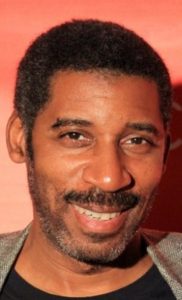 David Padgett, Tennessee State University
David Padgett, Tennessee State University
The AAG recognizes Dr. Padgett’s significant contributions in advancing geography, GIS, and STEM education within the Historically Black College and University—an important but traditionally neglected community within our discipline. He has become an important authority on the opportunities, challenges, and needs facing geographers at predominantly minority-serving institutions as well as those working in small academic programs and blended departments. Dr. Padgett has amassed an exemplary career in community engaged scholarship and teaching, having developed working relationships with a variety of grassroots groups, non-profits, and government agencies. His innovations in service-learning and participatory research are felt locally and through the many national workshops and funded projects he has helped lead. He forcefully demonstrates our discipline’s capacity to leverage geographic knowledge and geospatial technology to empower citizen science and social and environmental justice.
2019 AAG Honorary Geographer
The AAG annually selects an individual as the year’s Honorary Geographer. The award recognizes excellence in research, teaching, or writing on geographic topics by non-geographers. Past recipients include Stephen Jay Gould, Jeffrey Sachs, Paul Krugman, Barry Lopez, Saskia Sassen and Maya Lin.
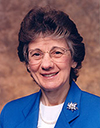 Rita Colwell, University of Maryland College Park
Rita Colwell, University of Maryland College Park
The committee chose Dr. Colwell for her distinguished career as the 11th Director of the National Science Foundation, her many important leadership roles in academia, and her many significant advisory positions in the U.S. Government, nonprofit science policy organizations, and private foundations, and in the international scientific research community.
The 2019 Marble-Boyle Undergraduate Achievement Award in Geographic Science
The Marble-Boyle Undergraduate Achievement Award recognizes excellence in academic performance by undergraduate students from the U.S. and Canada who are putting forth a strong effort to bridge geographic science and computer science as well as to encourage other students to embark upon similar programs. The award is an activity of the Marble Fund for Geographic Science of the AAG.
Katherine Jolly, Macalester College
Pearl Leff, Hunter College – CUNY
Rachel Pierstorff, University of Denver
2019 Community College Travel Grants
Provides financial support for students from community colleges, junior colleges, city colleges, or two-year educational institutions to attend the Annual Meeting.
Kevin Cody, Santa Barbara City College
Do Khym, Cerritos College
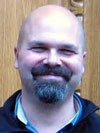 Each year the AAG president helps to identify a few themes for the AAG Annual Conference. While any topic is accepted for presentation at the annual meeting and participants are encouraged to develop their own special sessions, themes encompass a few specific points of interest for our Annual Conference and are used to organize a series of sessions, to focus discussion, and to highlight key events during the conference.
Each year the AAG president helps to identify a few themes for the AAG Annual Conference. While any topic is accepted for presentation at the annual meeting and participants are encouraged to develop their own special sessions, themes encompass a few specific points of interest for our Annual Conference and are used to organize a series of sessions, to focus discussion, and to highlight key events during the conference.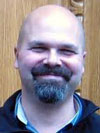 As geographers, we all know the value of geography. Right? It is a field that provides a unique perspective, an appreciation for particularity, an opportunity to synthesize. But as much as we affirm geography’s value to each other, we also need to look at how geography is perceived outside of our community.
As geographers, we all know the value of geography. Right? It is a field that provides a unique perspective, an appreciation for particularity, an opportunity to synthesize. But as much as we affirm geography’s value to each other, we also need to look at how geography is perceived outside of our community.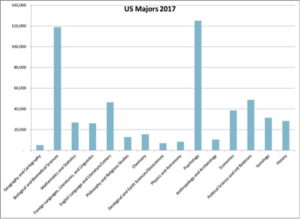
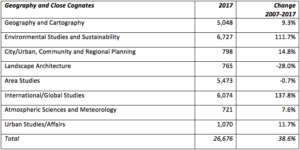
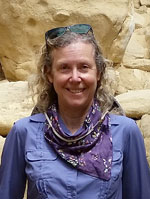
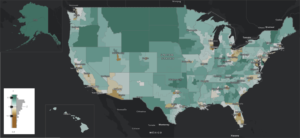
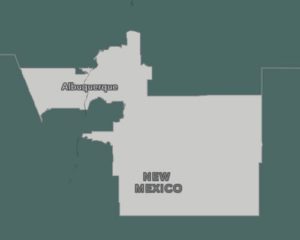
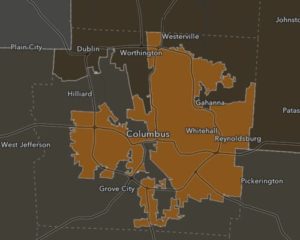

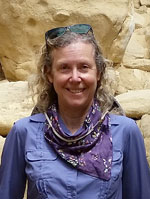
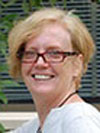
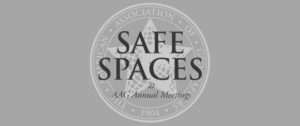
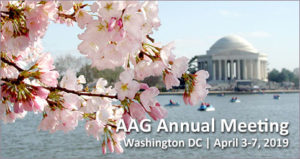 AAG president Sheryl Luzzadder-Beach provides the inside scoop on upcoming activities at the AAG Annual Meeting as well as a reminder to vote in the ongoing AAG election in her monthly column. As she remarked in her first presidential column, as AAG members prepare to visit Washington, D.C., “imagine what 12,000-plus geographers can do together to make a better world.”
AAG president Sheryl Luzzadder-Beach provides the inside scoop on upcoming activities at the AAG Annual Meeting as well as a reminder to vote in the ongoing AAG election in her monthly column. As she remarked in her first presidential column, as AAG members prepare to visit Washington, D.C., “imagine what 12,000-plus geographers can do together to make a better world.”
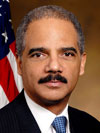
 Curious to know more about the area immediately surrounding the 2019 AAG Annual Meeting hotels? While the hotels themselves are situated in the Woodley Park Neighborhood (home to the Smithsonian National Zoo), several bordering neighborhoods are easily accessible by foot, bike, or transit. Learn more about the hyperlocal sites found in each of these communities while you prepare to visit Northwest D.C. in April.
Curious to know more about the area immediately surrounding the 2019 AAG Annual Meeting hotels? While the hotels themselves are situated in the Woodley Park Neighborhood (home to the Smithsonian National Zoo), several bordering neighborhoods are easily accessible by foot, bike, or transit. Learn more about the hyperlocal sites found in each of these communities while you prepare to visit Northwest D.C. in April.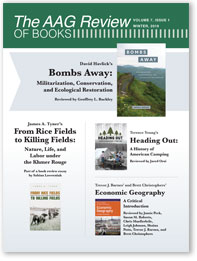
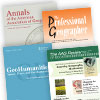 In addition to the most recently published journal, read the latest issue of the other AAG journals online:
In addition to the most recently published journal, read the latest issue of the other AAG journals online: From art in China to water security, almost the whole alphabet is covered with the latest titles in geography that were received by the AAG during the month of January. The New Books list contains recently published titles in geography and related fields.
From art in China to water security, almost the whole alphabet is covered with the latest titles in geography that were received by the AAG during the month of January. The New Books list contains recently published titles in geography and related fields.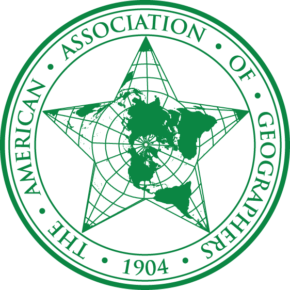 The AAG Council has assembled a search committee composed of current council members and other experienced geographers to work on the important task of recruiting a new executive director. In addition to specialty, affinity and other groups within AAG, the general membership is encouraged to provide their views, and suggested candidates, through an
The AAG Council has assembled a search committee composed of current council members and other experienced geographers to work on the important task of recruiting a new executive director. In addition to specialty, affinity and other groups within AAG, the general membership is encouraged to provide their views, and suggested candidates, through an  The AAG election will be conducted online again, and will take place January 30 – February 21. Each member who has an email address on record with the AAG will receive a special email with a code that will allow them to sign in to our AAG SimplyVoting website and vote. The 2019 election slate is available on our website to prepare you for casting your vote.
The AAG election will be conducted online again, and will take place January 30 – February 21. Each member who has an email address on record with the AAG will receive a special email with a code that will allow them to sign in to our AAG SimplyVoting website and vote. The 2019 election slate is available on our website to prepare you for casting your vote. The AAG Fellows program recognizes geographers who have made significant contributions to advancing geography. AAG Fellows, conferred for life, serve the AAG as an august body to address key AAG initiatives including creating and contributing to AAG initiatives; advising on AAG strategic directions and grand challenges; and mentoring early and mid-career faculty.
The AAG Fellows program recognizes geographers who have made significant contributions to advancing geography. AAG Fellows, conferred for life, serve the AAG as an august body to address key AAG initiatives including creating and contributing to AAG initiatives; advising on AAG strategic directions and grand challenges; and mentoring early and mid-career faculty. The AAG is excited to welcome three new interns coming aboard our staff for the Spring 2019 semester! Joining us this semester are Matilda Kreider, a junior at George Washington University majoring in Political Communication with a minor in Geography, Crystal King, a senior at Michigan State University majoring in Economic Geography with a cognate in Business, and Jessica Gillette, a sophomore at George Washington University double majoring in Geography and International Affairs.
The AAG is excited to welcome three new interns coming aboard our staff for the Spring 2019 semester! Joining us this semester are Matilda Kreider, a junior at George Washington University majoring in Political Communication with a minor in Geography, Crystal King, a senior at Michigan State University majoring in Economic Geography with a cognate in Business, and Jessica Gillette, a sophomore at George Washington University double majoring in Geography and International Affairs.
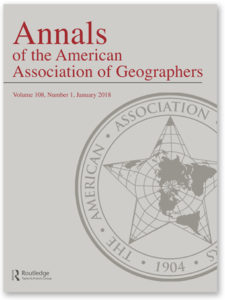
 Professor Serge Wich, Dr. Alex Piel, Dr. Fiona Stewart and a team of PhD researchers from Liverpool John Moores University are working to save Tanzania’s chimpanzees. Their tools: homemade drones and Pix4Dmapper.
Professor Serge Wich, Dr. Alex Piel, Dr. Fiona Stewart and a team of PhD researchers from Liverpool John Moores University are working to save Tanzania’s chimpanzees. Their tools: homemade drones and Pix4Dmapper. Lorraine Dowler, Penn State
Lorraine Dowler, Penn State Latoya Eaves, Middle Tennessee State University
Latoya Eaves, Middle Tennessee State University Minelle Mahtani, University of British Columbia
Minelle Mahtani, University of British Columbia
 Rickie Sanders, Temple University
Rickie Sanders, Temple University David Padgett, Tennessee State University
David Padgett, Tennessee State University Rita Colwell, University of Maryland College Park
Rita Colwell, University of Maryland College Park